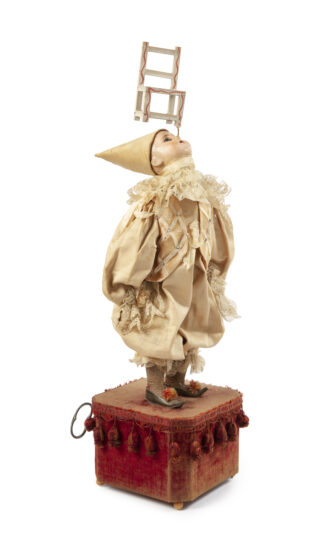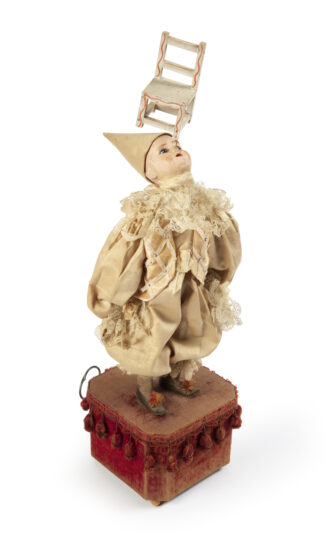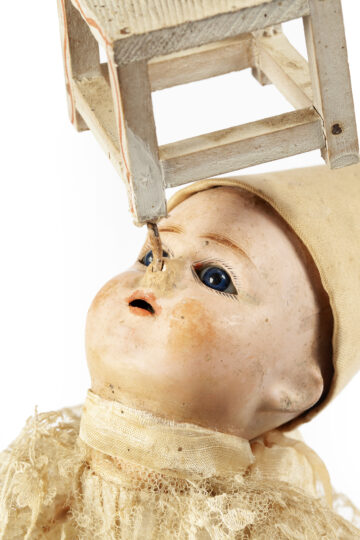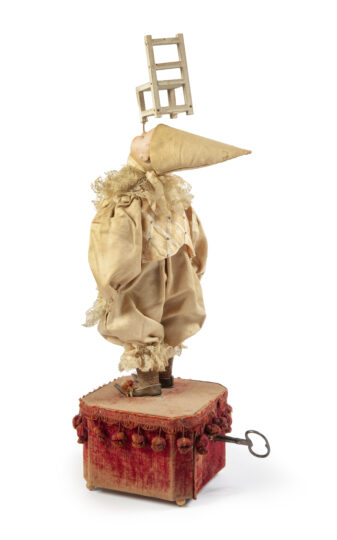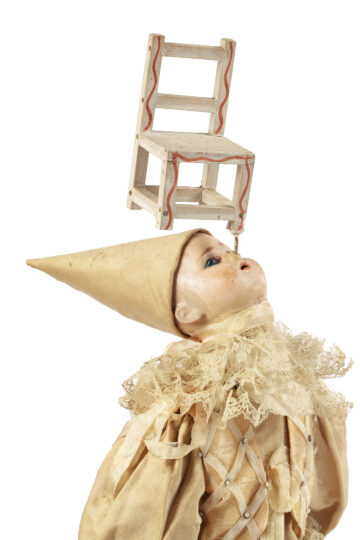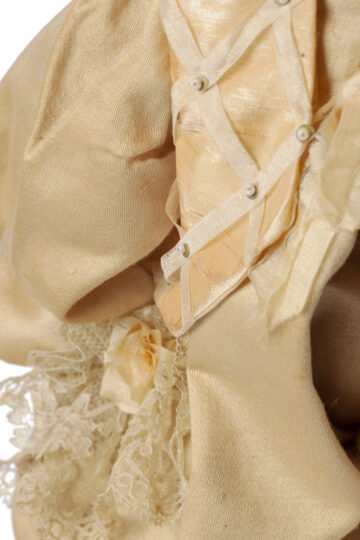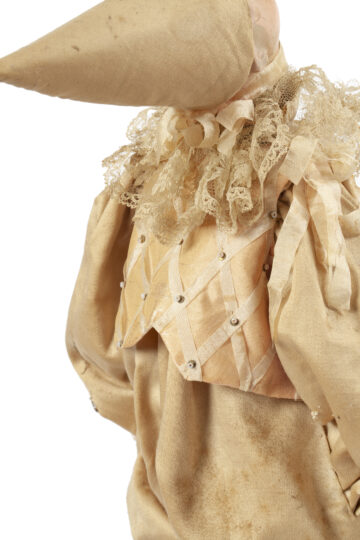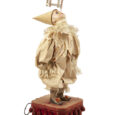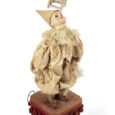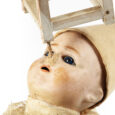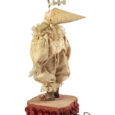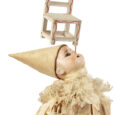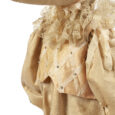Rare musical automaton ‘Clown’ Ascribed to G. Vichy Ca. 1890 France
M&R246
Rare musical automaton ‘Clown’
Ascribed to Gustave Vichy
Circa 1890
France
The clown
This rare automaton clown with a chair balancing on his forehead is entirely made in the style of Gustave Vichy and can be ascribed to him. The clown is activated by pulling out a button to the side, which also starts the musical mechanism. The body, the head and the chair then start moving. The original silk costume is embellished with ribbons mother-of-pearl buttons and lace, while the clown wears leather shoes and woollen socks. He is situated on a wooden base, covered in pink velvet which is adorned by ball-shaped tassels.
The maker
Gustave Vichy was born in Paris in 1839. As a child, he assisted his father in his toy shop, which, among other things, sold mechanical toys. His father was bankrupted when Gustave was only 23, but the young man decided to try and save the family business. After receiving a patent for the substitution of some wooden parts in the mechanisms by metal parts, he established his own factory. The production focused on musical automata instead of mechanical toys.
Vichy married Maria-Teresa Burger in 1864 – a couturier who sewed the clothes for the dolls. Trying to find his own way, Vichy began to improve the construction of the automata and paid special attention to the doll’s clothes, which his wife created following the latest fashion. Vichy was the first manufacturer who organized the entire production process in his small workshop. In 1878 the company received the silver medal at the exhibition in Cherbourg, and in 1880 the gold medal at the World Fair in Melbourne. Vichy’s children were gradually involved in the family’s business. His son Henry renamed the firm G&H (Gustave and Henry). In the same period the best-known automata were created: “Pierrot on the Moon” and “Moon of the Century End”. After Henry had conducted active negotiations with the firm “Lioret”, which produced phonographs, he was the first among automata manufacturers to apply a phonograph in his automata. One of his most well-known examples is “A French Soldier-Trumpeter”.After the death of Vichy senior in 1904, the family sold the business to August Triboule, a former worker.
Duration: The musical automation can be activated eight times per winding.
Height: 59 cm.
Literature
Cristian Bailly, Automaten, das goldene Zeitalter 1848-1914, pp. 63 and 111.

